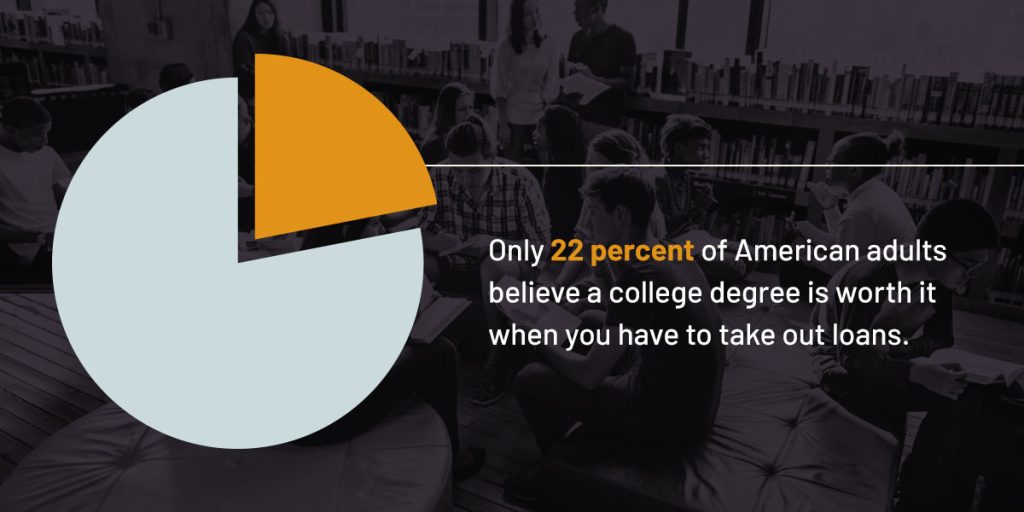
If there is one topic occupying space across industries, it’s artificial intelligence (AI). Many institutions are embracing AI in education to improve the learning experience and overall student learning outcomes. However, AI has global implications. The workforce is also undergoing an unprecedented transformation, and institutions must prepare students for jobs that may not exist today.
Much of the focus on AI has been centered around student learning, but it has untapped administrative potential. What operational challenges is your institution facing? How can you leverage AI to address them? Alongside providing personalized and dynamic learning paths for students, AI can enhance productivity, amplify outreach, boost student engagement, and optimize institutional operations.
This eBook begins with an overview of AI’s current use cases in higher education. Then, it moves into unique strategies you can implement across your institution to enhance every aspect of your operations.
When AI first became widely available, many higher education institutions were apprehensive about its potential impact on students and faculty. What was to prevent students from using ChatGPT to write papers? How would they contain such a revolutionary and freely available technology? Although the dust has settled as we become more familiar with the benefits of AI, few people recognized the impact it would have on higher education.
Today, institutions worldwide use AI in education for its ability to streamline administrative tasks and engage students. Some of the many ways AI has transformed education include:
Among all the AI trends in higher education, one of the most actionable is the support it provides to faculty and administrators. The technology excels in simplifying complex and cumbersome tasks without removing human insight entirely. Administrative personnel can use AI to free up their time for more intuitive work, which ultimately benefits students and the institution. Some use cases for AI in higher education administration include:
Continuous technological development gives you access to generative AI in higher education. These tools can produce natural language, computer code, and images in response to user queries. However, many solutions exist that cover almost every aspect of higher education. Your choice of AI capabilities depends on your goals and overarching mission. Some AI higher education tools include:
Generative artificial intelligence and machine learning have quickly integrated into many higher education institutions. Although AI is no longer in its infancy, innovations continue to change how it’s used. Many believe that institutions that resist these innovations or lack agility will be at a distinct disadvantage.
How you use AI depends on your goals, but it’s best to stay agile in the face of change. By nature, higher education institutions are at the forefront of innovation, and AI is no different. Some unique ways to leverage AI at your institution include:

Despite innovations in higher education, opinions today are divided. Only 22 percent of American adults believe a college degree is worth it when you have to take out loans. Many focus on their careers from the outset. If they pursue higher education, they expect a well-defined link between their course material and their careers. Your institution can use AI to make the connection through:
Over half of students in a recent poll said applying to college was their most stressful academic experience to date. Enrollment is always a priority for higher education institutions, and you can use AI to create a smooth applicant journey while reducing the administrative workload. Conversational AI chatbots can offer unlimited support, reminding them about deadlines, financial aid, student support, and any other boxes they must check during enrollment.
In addition, AI can align financial aid resources with student needs. It provides personalized support throughout the student life cycle, resulting in greater economic equity and reduced administrative costs.
AI can also simplify administrative tasks with enrollment marketing and donor outreach. It can produce personalized content for individual students and distribute it automatically across multiple channels. It meets students where they are and creates a cohesive brand voice for your institution — strengthening engagement and boosting application conversion rates.
These AI systems can create the same customized journeys for donors. They can analyze donor behaviors and use them to adapt outreach, increasing donor retention.
Incorporating AI into every aspect of curriculum design could enhance the learning experience. It’s a powerful tool for aligning learning objectives across courses, upgrading the teaching process, and ensuring assessments accurately reflect core student outcomes. Instead of operating in a vacuum, you can use data to make informed decisions about curricular changes.
With innovative technology, you can identify gaps in your curriculum while enhancing other workflows and reducing the administrative burden on faculty. You can determine whether courses cover the intended outcomes, integrate experiential learning, and define where assessments are needed.
AI excels at complex administrative tasks, from resolving queries to holistic application reviews. Conversational chatbots can address increasingly nuanced student concerns, managing and even resolving their inquiries. They reduce the workload for staff and improve student and faculty satisfaction when interacting with your institution.
Sophisticated AI tools also expedite the evaluation of student applications, streamlining holistic reviews and freeing staff to focus on core aspects of your administration. You can train AI chatbots on your institutional knowledge, including internal policies and legal contracts, giving staff immediate access to this information. They will spend less time searching for data and can act appropriately with no gray areas when facing decisions or analyzing contracts.
The admissions process remains a controversial aspect of higher education. In 2023, the Supreme Court ruled against affirmative action in higher education admissions, and many wondered how to ensure an unbiased admissions process in the future. AI can remove an element of bias from admissions, depending on how it is trained. Your institution can identify demographic and behavioral variables that align with your values and objectives so AI can locate candidates with the desired qualities and experience.
Factors like empathy and persistence, which were previously challenging to quantify, are now conquerable with AI. It can map your institution and programmatic objectives to specific variables, optimizing the admission of diverse students. You can task AI with the evaluation of candidates based on criteria beyond test scores and other numerical data points. It allows admissions staff to bypass biases and recognize holistic excellence.
Despite all the current benefits, AI’s potential in higher education is perhaps the most exciting. This rapidly evolving technology will likely find new ways to enhance higher education. Some future advancements we’ll likely see include:
Many institutions already use AI to prepare for accreditation, and the process will only become more effective. Leveraging AI streamlines the preparation process, using data to inform quality assurance at every level. AI boosts collaboration across campus, monitors academic outcomes, and evaluates program effectiveness. It will provide real-time information on operational inefficiencies, flag improvement opportunities, and synthesize high-quality data for accreditors.
AI will continue to transform how institutions conduct research. Automated tools will change how people gather, investigate, and explore information. One of AI’s most robust capabilities is processing massive amounts of data. In the future, it will likely become more adept at recognizing patterns and reviewing content, which means researchers can draw meaningful conclusions. Chatbots can also provide increasingly accurate research assistance. They can clarify complex topics or add relevant information, streamlining the gathering and analysis of support resources.
AI, AR, and VR will combine to offer students more interactive and experiential learning opportunities. Students and faculty can experiment and make mistakes in a safe environment and immerse themselves in learning that allows them to apply theoretical knowledge in practical ways. These solutions can also offer virtual tours for new and prospective students, increasing engagement and providing more access to student support.
AI will play a significant role in boosting collaboration across campus. These tools will change how institutions collaborate, analyze availability, recommend meeting times, and flag communication constraints. They automate scheduling and guide optimized communication to save time and focus on efficient, effective collaborative opportunities.

In higher education today, leveraging AI’s capabilities is essential to remain competitive, streamline operations, and prepare students for their future careers. AI already has a profound impact on higher education. Yet, there is still much potential to discover, and your institution can be at the forefront of innovation with a complete set of technology tools purpose-built for higher education.
At Watermark, we believe that every technological advancement has the potential to enhance higher education. We have harnessed the power of AI to invigorate our solutions while maintaining a strong ethical foundation. The Watermark Educational Impact Suite (EIS) is a centralized platform that solves problems and makes your processes more efficient. Leverage AI to drive continuous improvement and request a demo to see the difference it can make firsthand!